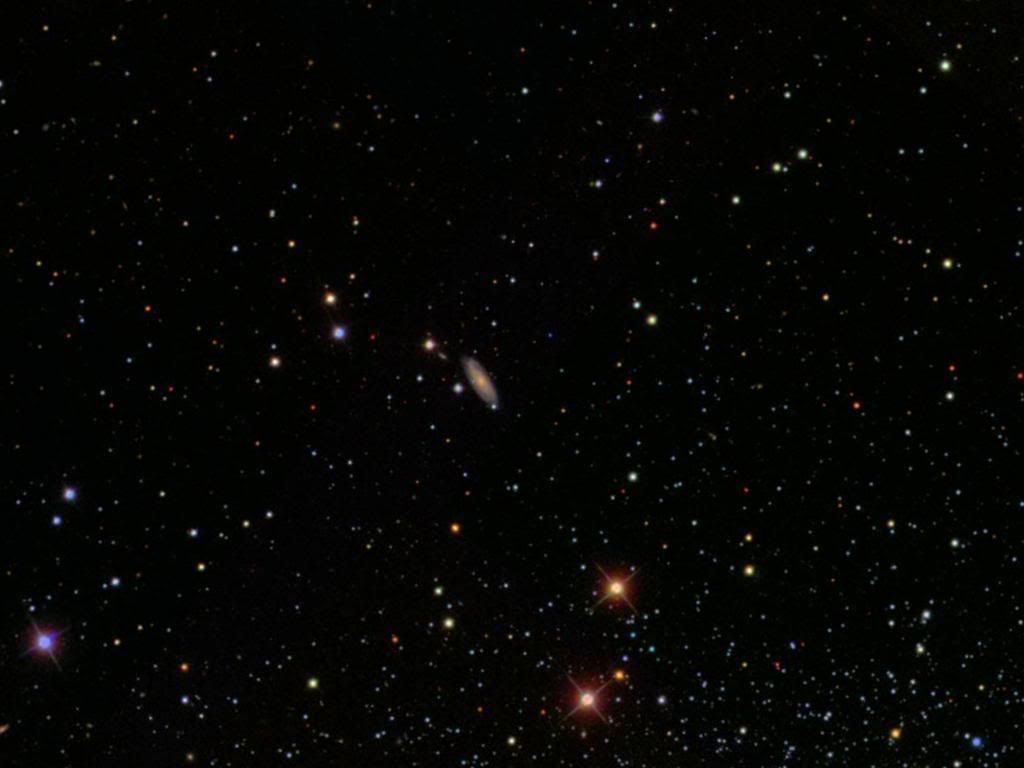zeroglobular wrote:Is a globular cluster a galaxy without a black hole in the center? Are they common?
There are interesting differences between galaxies and globulars. In the case of the Fornax dwarf galaxy, the globulars have a much, much higher surface brightness than the faint, scattered galaxy. Read about the galaxy and its globulars
here, where you can also see the picture at left at much higher resolution.
Another example of a
fluffy galaxy and a bright, concentrated globular apparently (but not really) right next to one another is the Small Magellanic Cloud and globular cluster 47 Tucanae.
I'd say that globular clusters were probably all formed after tremendous bursts of concentrated star formation, which led to the formation of massive, highly concentrated clusters. They are, as far as I know, practically always spherical, although some might be
elongated or flattened. They are never disk-shaped, and they never have spiral arms.
Globulars can evaporate over time. The picture of globulars M53 and NGC 5053 shows one dense, massive globular (M53) and one fluffy one (NGC 5053). The latter was shown to be a globular only after it was made clear that it followed the typical globular cluster Hertszprung-Russell color-magnitude diagram, which meant that it was as old as other Milky Way globular clusters.
Galaxies, by contrast, are not the product of a single burst of star formation. They are typically far, far more extended than globular clusters. In the relatively few cases where galaxies are small, highly concentrated and extremely bright for their size, they have typically been "bullied" by a much larger neighboring galaxy. But even those
small compact galaxies are larger than globular clusters.
The Bullet Cluster. Chandra X-Ray Observatory: 1E 0657-56
NASA/CXC/M. Weiss
Why do globular clusters lack dark matter?
I don't know, but I do know that dark matter and baryonic matter ("ordinary matter") can separate from one another. The most famous example of this is the Bullet Cluster, where dark matter (blue) has separated from the baryonic matter, the hot hydrogen gas (red). The Bullet Cluster is the result of two massive cluster colliding with one another, and the dark matter doesn't seem able to "keep up" with the baryonic matter.
I believe that globular clusters typically survive for ten billion years of more because they have been flung away from their busy birthplaces, the crowded disks or molecular clouds of starburst galaxies. Most likely, they have been flung away when their parent galaxies interacted with other galaxies, like mini-versions of the colliding Bullet cluster. The globular clusters were likely "flung away" in such a way that the dark matter was left behind. At least that is my personal amateur hypothesis.
Ann
 M13: A Great Globular Cluster of Stars
M13: A Great Globular Cluster of Stars


